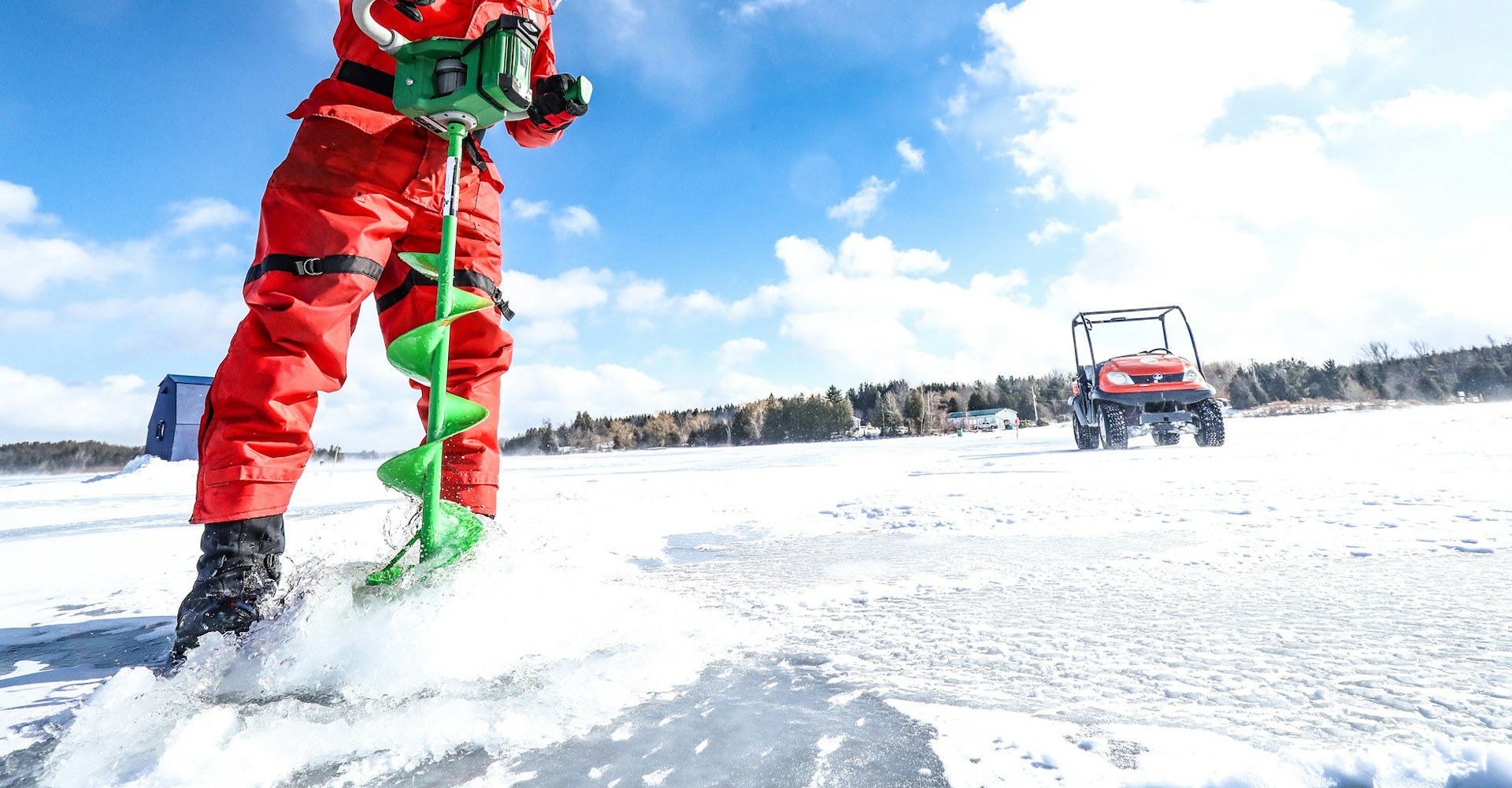The movie Frozen introduced a modern audience to the long-forgotten trade of ice cutting. Think men working with pick-axes and saws to extract massive blocks of ice from a frozen lake to sell to customers far and wide. In the late 1800s, the ice harvest played an important role in the Canadian economy. YDH sat down with Georgina Pioneer Village curator Melissa Matt to learn about Lake Simcoe’s ice cutting trade – and talk about its popular ice fishing scene.
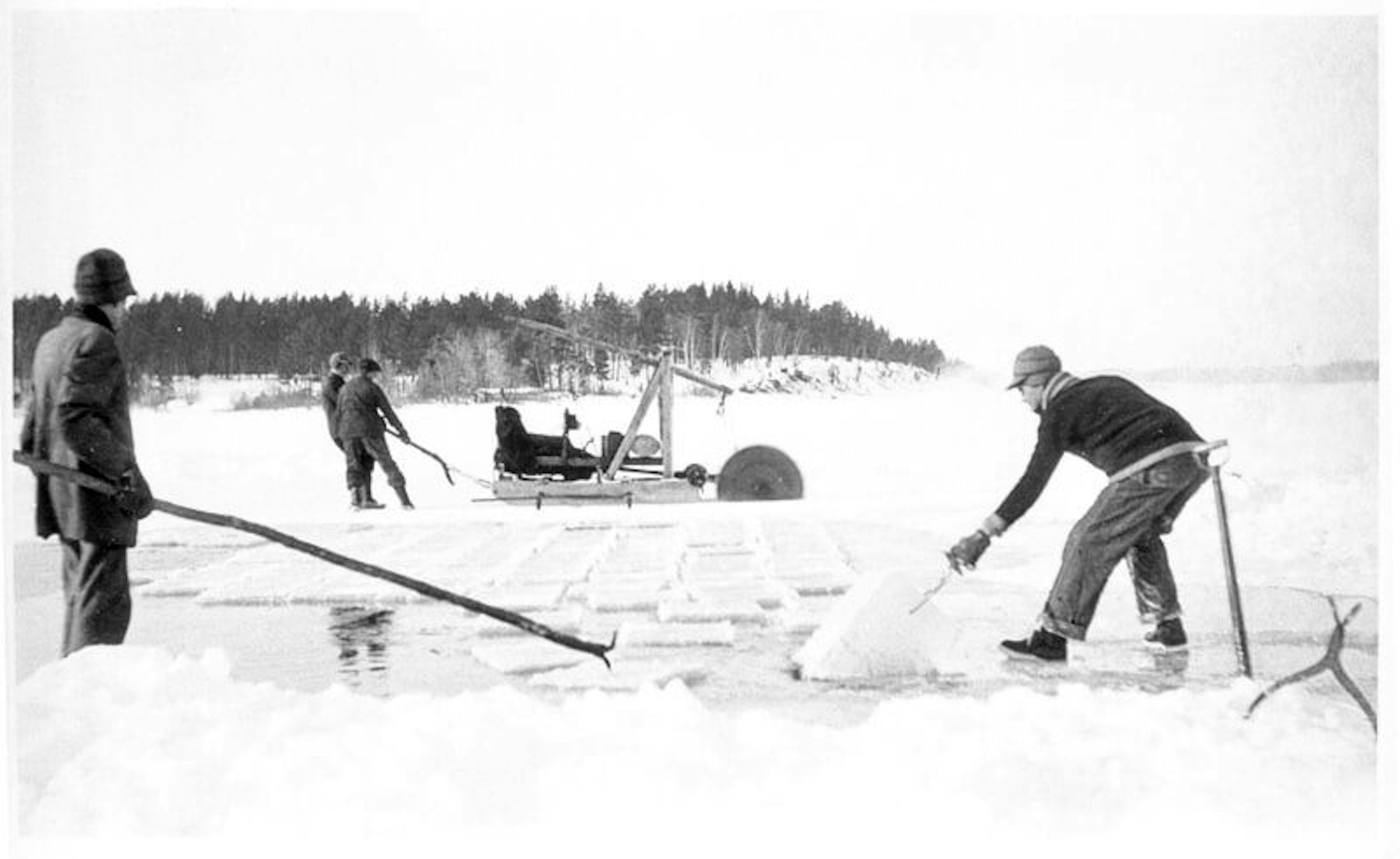
A BRIEF HISTORY
Take us back to Lake Simcoe circa 1870. How did the ice cutting boom get started?
In the beginning, many ice businesses were run by local families, and butchers and dairies would harvest their own ice right out of lakes and ponds. As farms grew bigger and more hotels opened, there was greater demand for fresh, clean ice. In 1876, James Fairhead started the Springwater Ice Company, which later became Lake Simcoe Ice Company after it acquired the Knickerbocker Ice Company. At Jackson’s Point, the ice trade employed 50 men and 12 horses!
How did workers harvest the ice from the lake?
It was quite a process! First, they had to clear the ice surface of snow using scrapers and a team of horses. Then, they used hand saws with sharp teeth – picture the two-handed saws used to cut down trees, but with just one handle – to cut massive ice blocks. When we say massive, we mean it… they were seriously big! Workers needed the ice to be between 14 to 20 inches thick before they would consider cutting, and the ice blocks harvested by the Lake Simcoe Ice Company weighed up to 300 pounds. Fun fact- the men who worked at the Jackson’s Point lumber mill in the summer worked in the ice trade in the winter. It was the perfect fit because they were used to loading and unloading rail cars. The lumber mill had a derrick, which is like a crane arm, which they used for lifting heavy objects. In the winter, they rigged the derrick to lift the ice blocks. At the time, the Lake Simcoe Junction Railway went right to the ice, so workers could load the blocks directly onto the train. This allowed the Lake Simcoe Ice Company to ship ice to customers as far away as Toronto and the United States. This trade was responsible for providing an enormous contribution to jobs in the region. It provided jobs for local men, as well as men who came to Lake Simcoe specifically for work. They rented rooms in boarding houses run by women, leading to even more work.
Picture dozens of men and horses, local farmers and seasonal workers, in teams scraping away the snow, scoring the ice with grid lines, breaking off large sections, and sawing the ice into manageable blocks. Men and horses manoeuvring ice blocks up ramps on to carts or elaborate wooden structures to be slid onto larger carts then horse-drawn to vast ice houses to be stored until needed, or to the nearby specially built rail line for shipping to local ice houses across southern Ontario.
Businesses and homes didn’t have access to factory ice or refrigeration for a couple of decades into the 20th century, but once they did the ice harvesting business declined dramatically. Small operations continued around Lake Simcoe into the mid-1950s and special seasonal events like the Alton Mill Fire & Ice Festival use large blocks for ice sculptures.
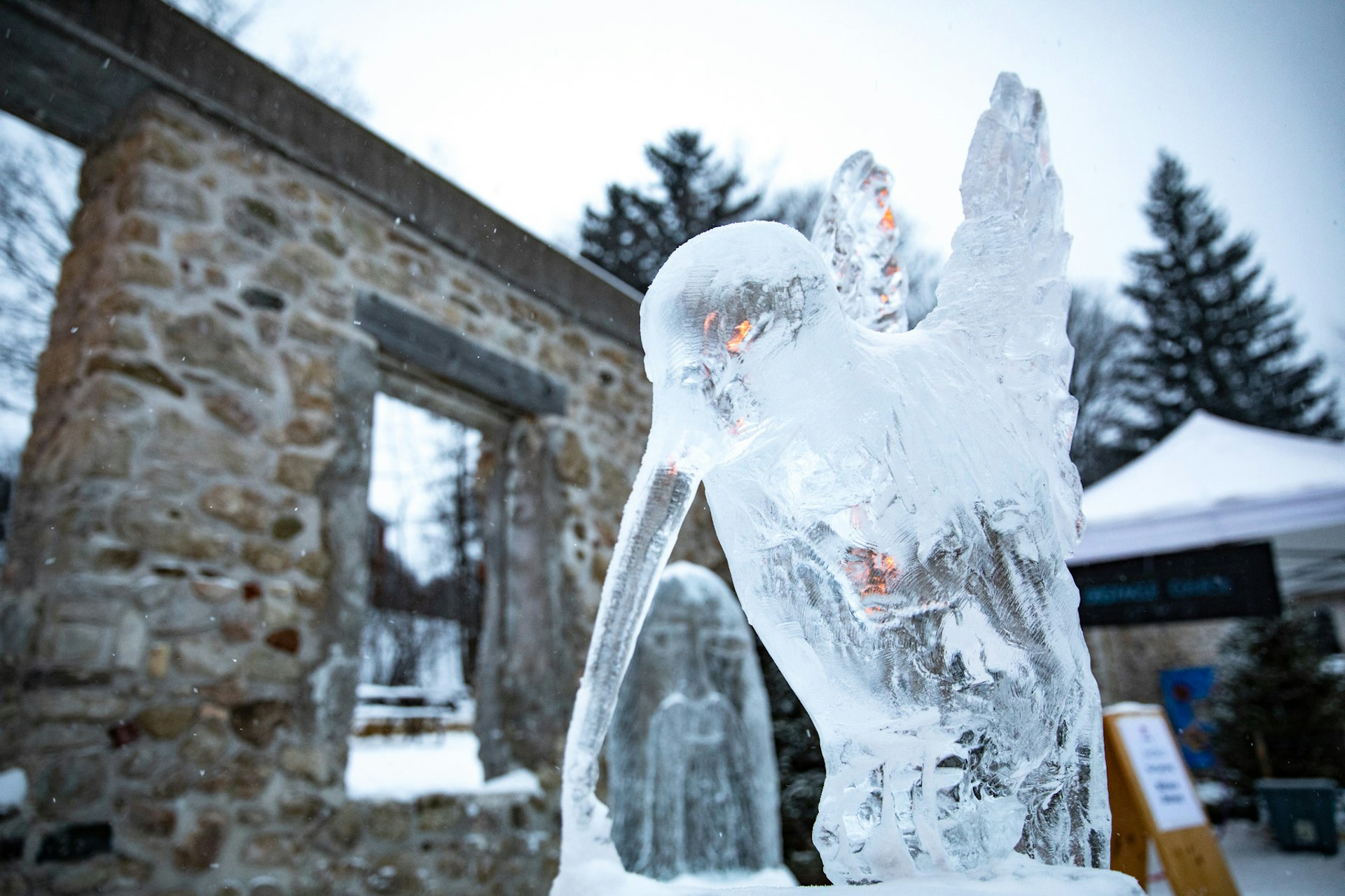
We understand, the ice fishing industry is also a time-honoured trade in Lake Simcoe.
That’s right. We have records going back as far as the early 1800s that show settlers bought fish from First Nations spearfishers during the months of January and February. At the time, settlers ate lots of preserved meats during the winter months and fresh caught fish was a welcome change of pace.
What did ice fishing look like in those days?
A spearfisher would make a hole in the ice, which they would cover with a small evergreen tent. They’d lie on the ice with the tent covering their upper body and keeping them warm. When they spotted a fish, they would strike it with a spear that had a barbed tip. Blacksmiths created spearheads with 13 tines that were attached to poles measuring 10 to 15 feet long. Another cool innovation is the wooden herring decoys spearfishers used. The decoys were weighted with lead and had tin fins that determined how they moved underwater. Georgina Pioneer Village has some spears and decoys for viewing in our collection – just be sure to call ahead and make an appointment!
And now, Lake Simcoe is known as the ice fishing capital of North America!
That’s right! In 1991, we hosted the World Ice Fishing Championship, and the Canadian Ice Fishing Championship came along in 1994. It’s always so magical to see the community of hundreds and hundreds of ice huts rise up on the frozen lake in the winter.
Now the ice fishing enthusiasts rule the ice and the sounds of men and horses, saws and surf, have been replaced by the beeps of sonar and underwater cameras, the hum of heaters, the whoops and the high fives, and the roar of snowmobiles heading back to land at the end of the day.
ICE FISHING IN YDH
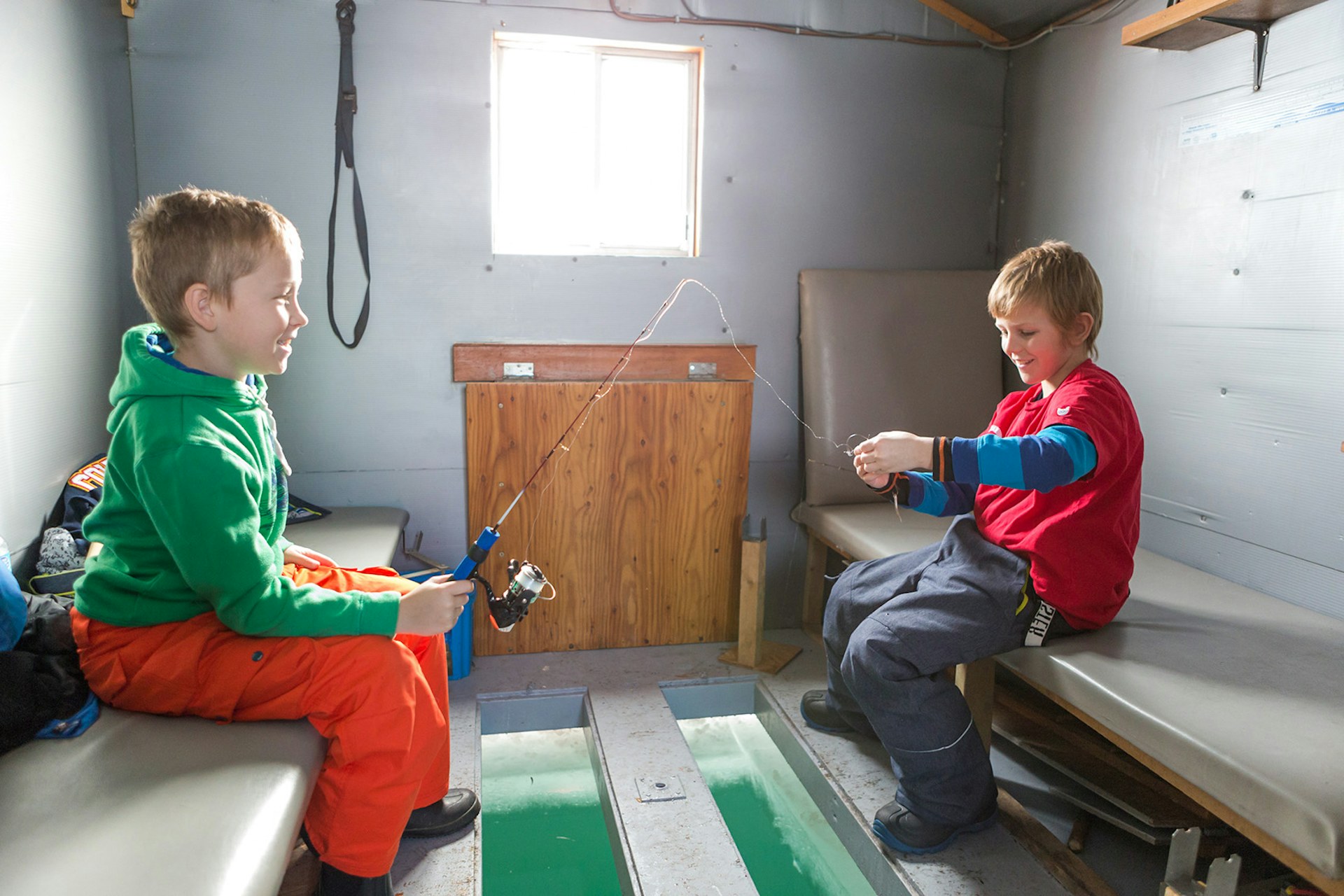
Ice fishing. There are fewer winter experiences that are more quintessentially Canadian than gathering your friends around a frozen hole in the dead of winter, waiting for the tell-tale tug of a fishing line.
Around these parts, the ice fishing season typically starts in mid to late January and closes March 15 (the date all huts must be off the ice). Whether you’re an avid fisherman or just curious about ice fishing, there are plenty of ice hut operators in York Durham Headwaters who can supply you with everything you need to get out on the ice this winter.
Operators:
- Floyd Hales Fish Huts
- CVC Island Lake Conservation Area
- Hank Heyink Fish Hut Rentals
- Ice Fishing Outfitters
- Jason’s Fish Huts
- Mitchell’s Fish Huts
- Snake Island Fish Huts
ICE FISHING ON LAKE SIMCOE
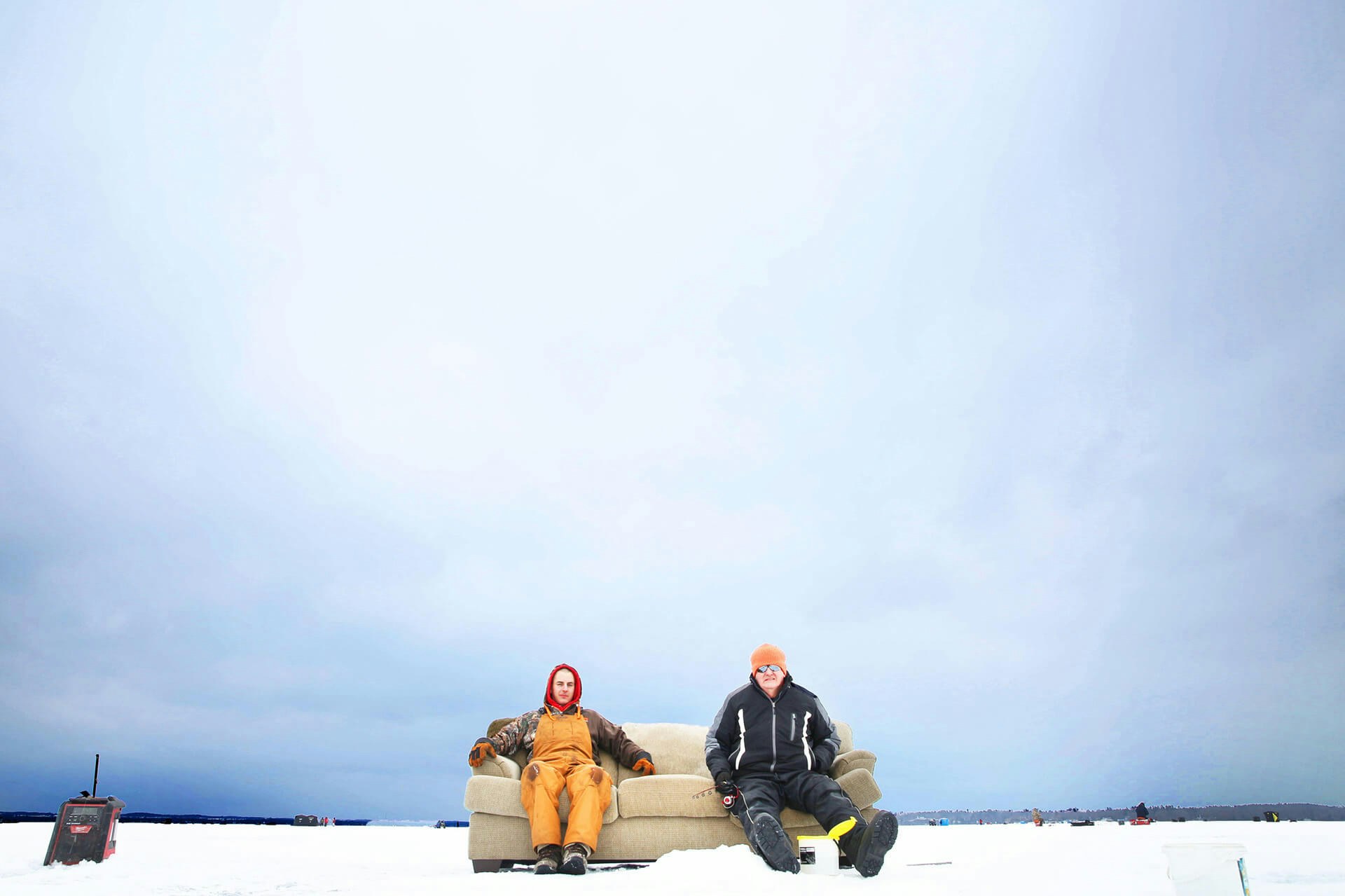
Since prehistory ice fishing on Lake Simcoe has provided essential cold weather edibles for Ontario residents. Now, ice fishing might be more a sport than a food source, but it’s a sport that comes with certain risks and requires a certain expertise to practice safely and successfully. Newbies should not try this on their own!
Regardless of personal experience, one thing has not changed over time about ice fishing: the adrenaline rush when you feel the tug of a fish on your line and the thrill of landing your catch amid cheers from your friends and family.
Lake Simcoe is known as probably the best location for ice fishing in Canada. Yellow perch, whitefish, lake trout, burbot and pike abound in the freshwater sanctuary whose waves wash the northern shores of York and Durham Regions. From the first safe ice in December to mid-March, as the law, the climate, and COVID allow, the frozen surface of Lake Simcoe will be dotted with ice fishing huts sheltering eager anglers and their catches.
From Barrie to Beaverton, the coast of Lake Simcoe is home to some of the best ice fishing operations. These businesses generally offer personal guides, transportation, shelter, all kinds of equipment, meals and years of hands-on experience. You’ll learn about jigging for whities and lakers, inside tips like goby sauce, and the true meaning of “Fish on!” Of course, you’ll need to check with individual business owners for rates, requirements and services available before you book a trip.
Try ice fishing on Lake Simcoe this winter. You might get hooked!
BEFORE YOU GO ICE FISHING
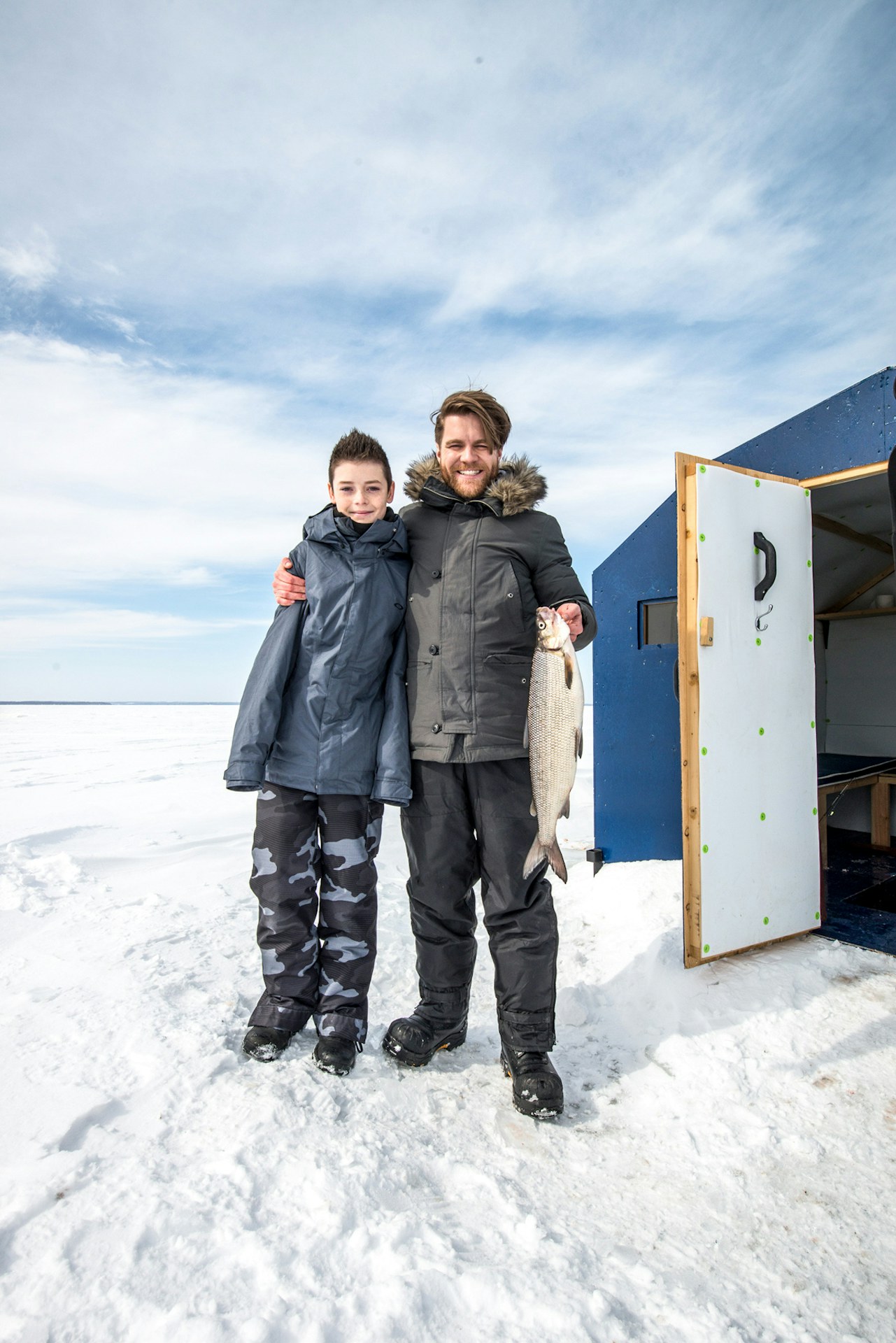
- Ice conditions can shift quickly. If you are an inexperienced ice fisher we strongly recommended that you check in with one of our seasoned ice hut operators for ice conditions before you venture out onto the lake.
- You must have a valid fishing license. Be sure to get one before you head out to the lake.
- Implement a safety plan by letting others know where you’re planning to fish and when you plan on returning.
- Wear appropriate clothing and equipment both for safety and to ensure that you have the most comfortable and pleasurable ice fishing experience possible. We recommend warm layers of clothing, water resistant gloves and insulated boots—it can get cold out there and snow can get deep around the huts. Don’t forget your hat!
- Read the ICE SAFTY TIPS BELOW
ICE SAFETY TIPS
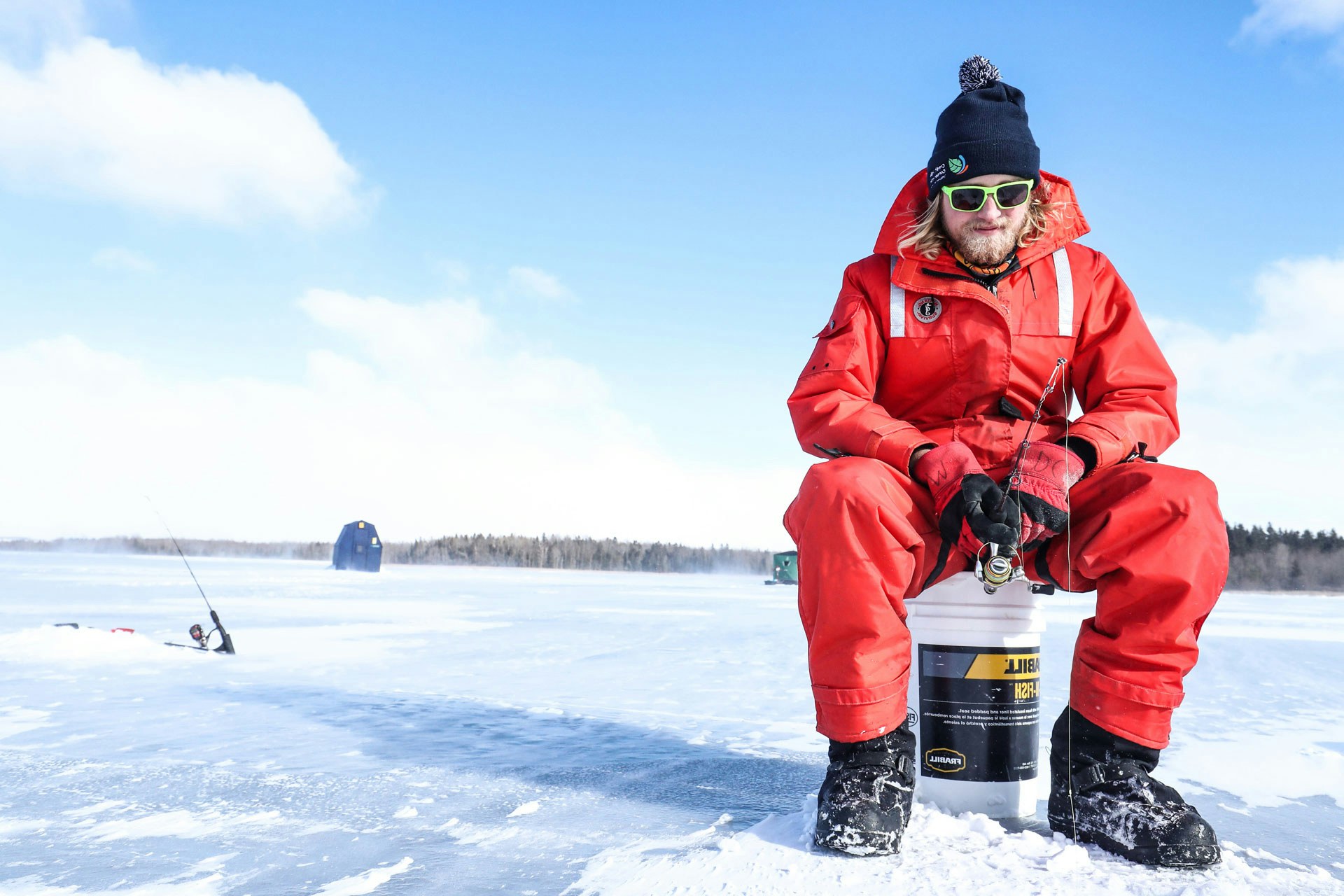
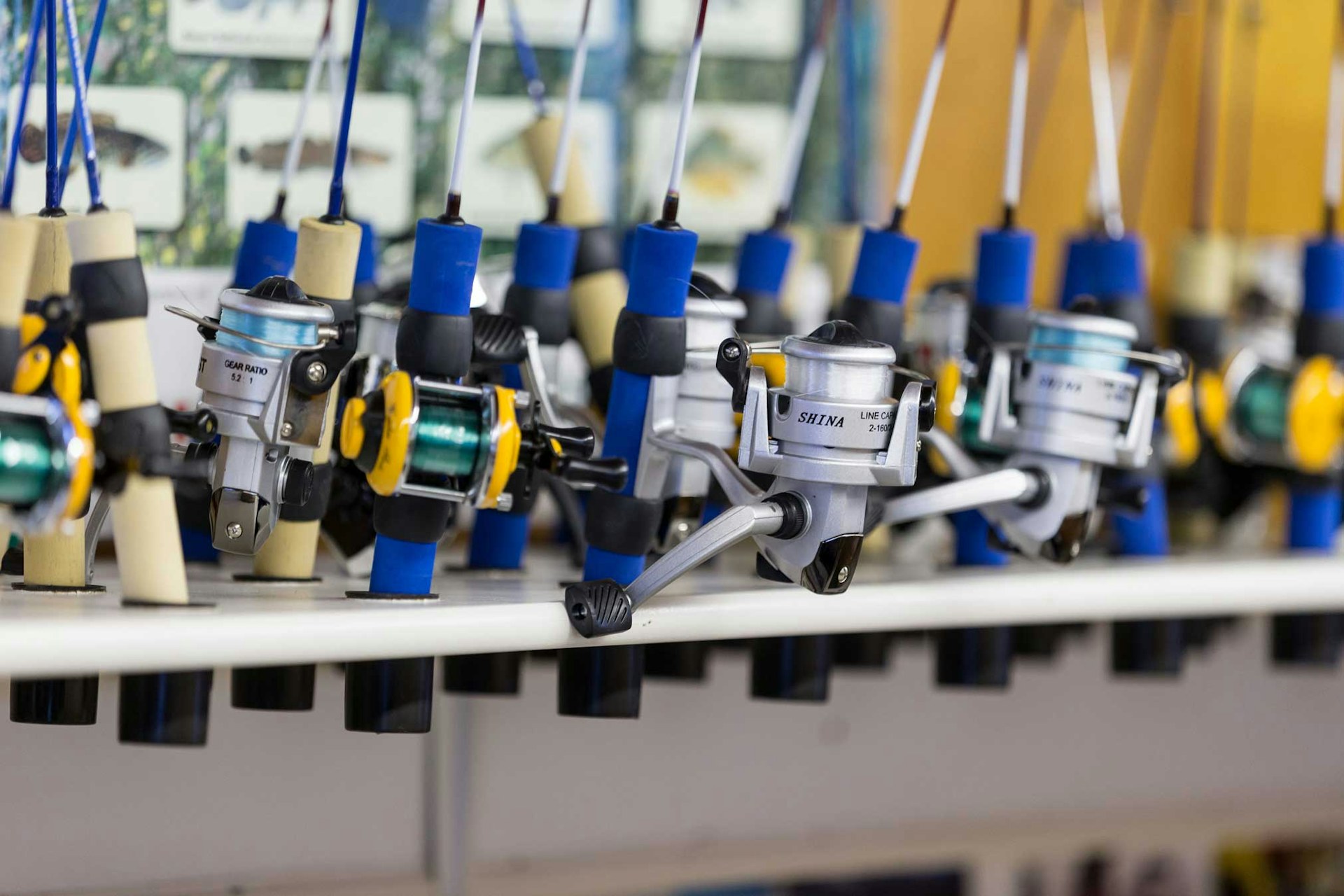
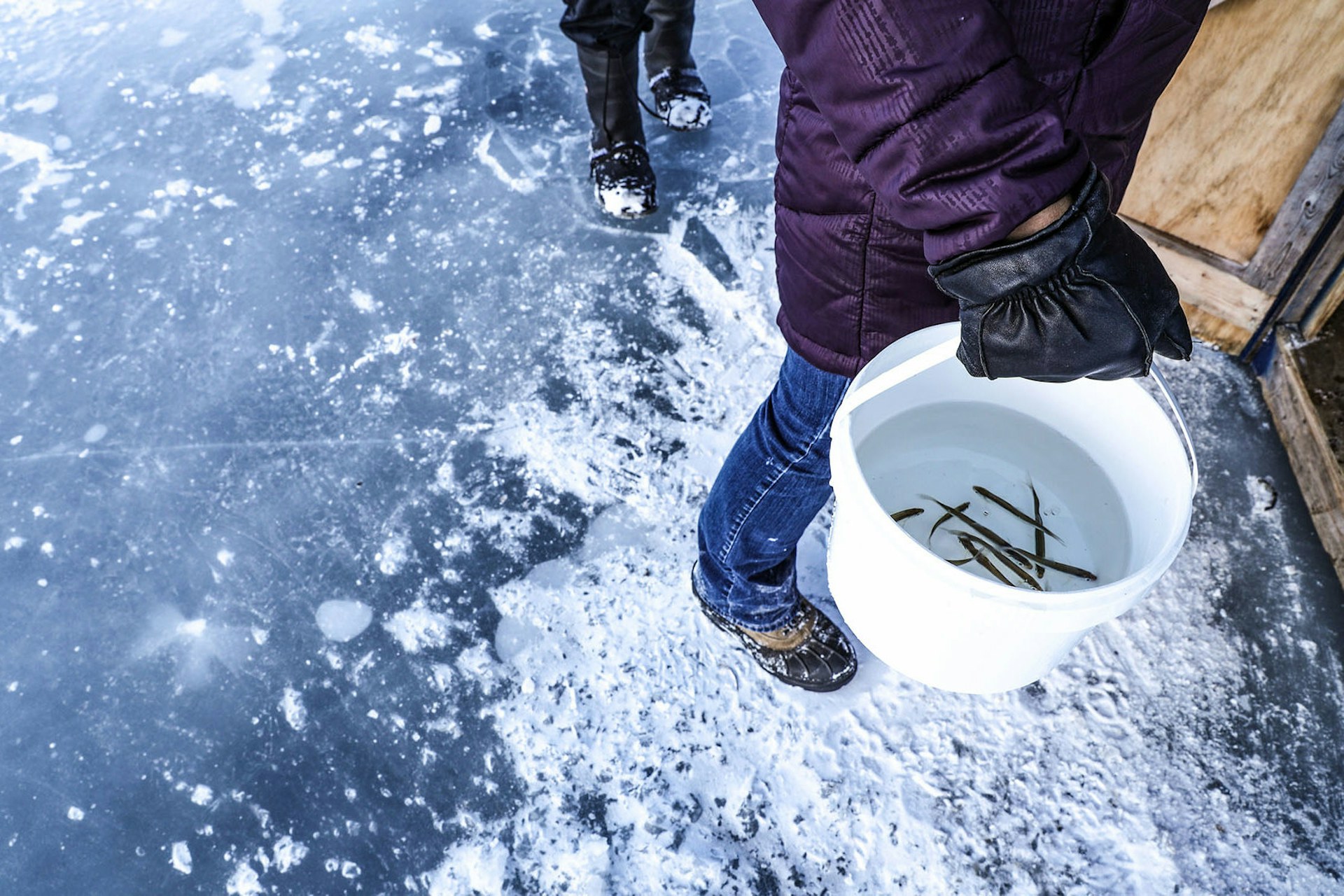
- Ice doesn’t freeze at uniform thickness.
- Ice is often much thicker and safer near the shore than the ice that is farther out, especially at the start of winter season
- As you move further out on to the ice, regularly check the thickness with a spud bar or an auger.
- Ice that forms over moving water, like a natural spring or near the mouth of a river or stream can be weaker than the surrounding ice.
- Ice that has formed over old ice holes may be weak.
- Keep your eye out for pressure cracks, this may indicate that the ice is weak.
- The colour of the ice will give you a clue as to its integrity. Clear blue ice is strong, where as white or opaque ice is much weaker.
- Beware of ice that looks honeycombed. This indicates that the ice may be thawing.
- Driving on ice requires extreme caution, it is important to know the thickness of the ice before venturing out. Here are the recommended minimum thickness levels for safety:
- Snowmobiles: at least 20 centimetres (8 inches) of clear blue ice
- Light vehicles: at least 30 centimetres (12 inches) or more
- Double the recommended thickness if the ice is white or opaque.
- CAUTION: Heavy snow on a frozen lake or river slows down the freezing process.
These tips are provided by the Ontario Ministry of Natural Resources. You can learn more about ice fishing by visiting their ice fishing resource page.
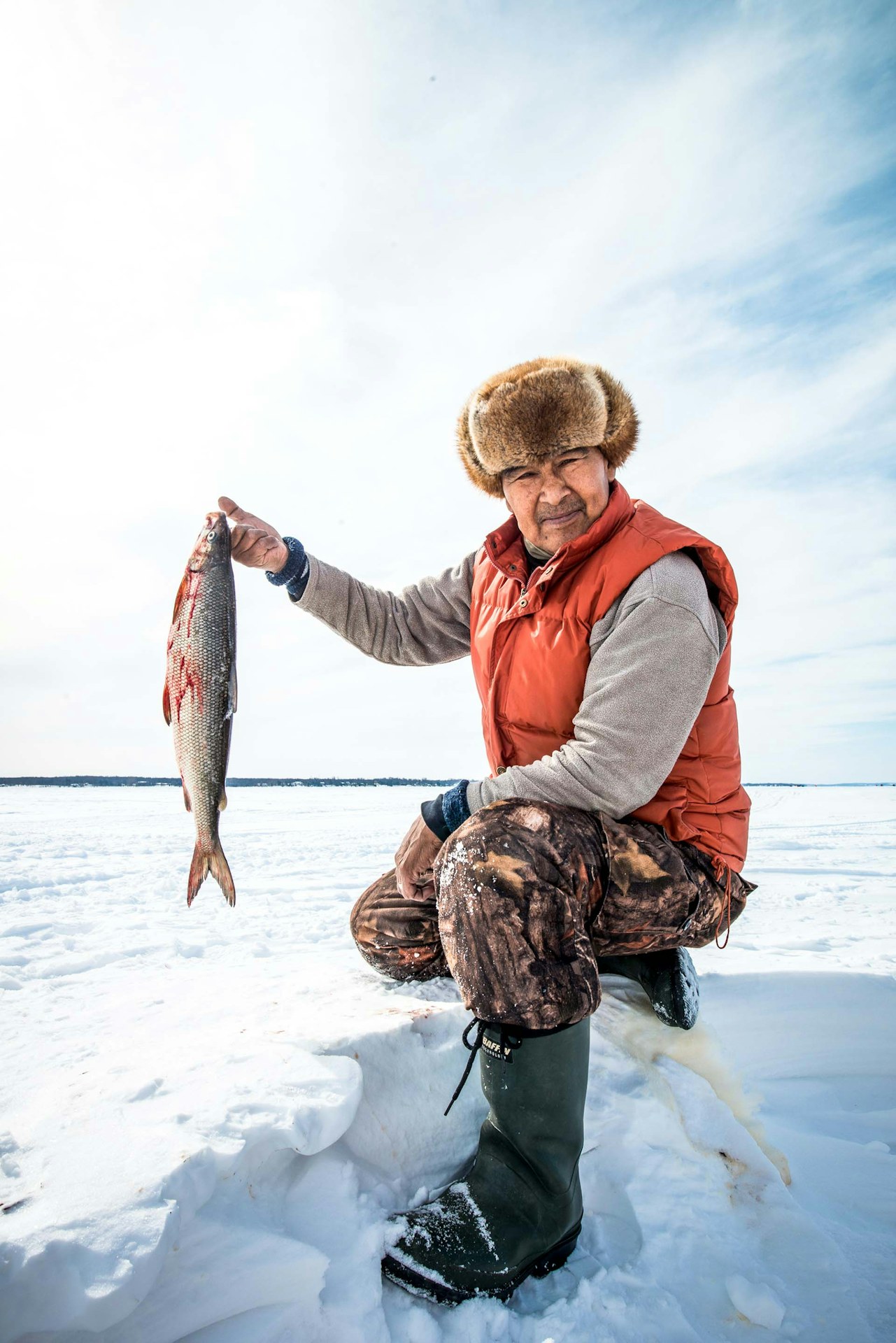
By Rob Morphy and Erika Cuccaro
After a long day outdoors, there’s nothing quite like a warm beverage and some comfort food. Check out some great spots to warm up below!
